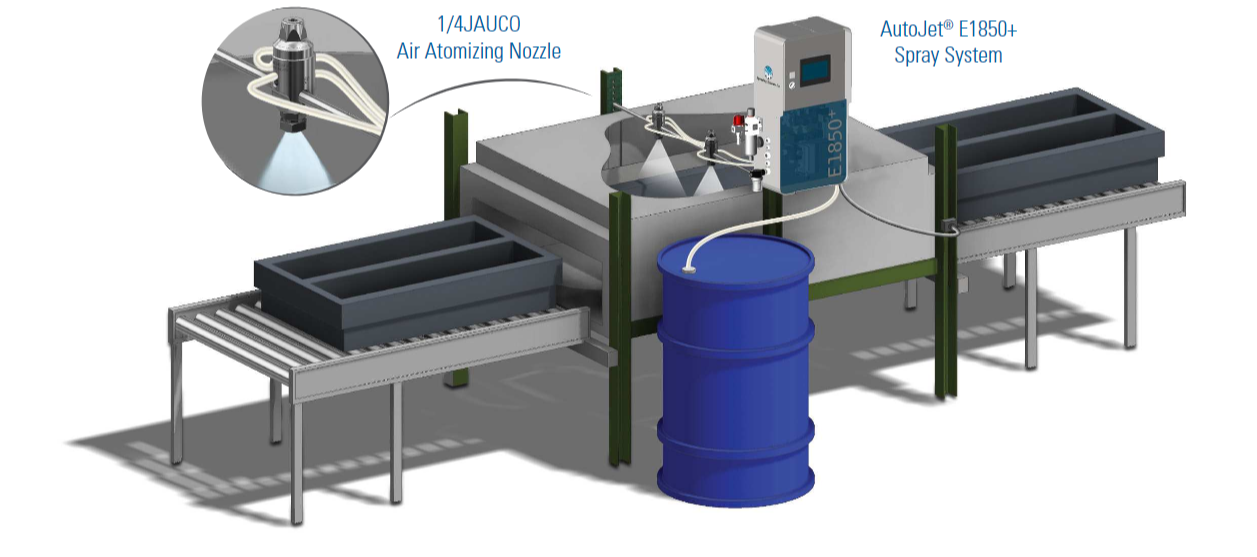A manufacturer of concrete retaining wall components needed a better release agent system to spray into their molds. Previously, a worker using a handheld air atomizing spray gun and pressure pot sprayed each empty mold as it moved down the conveyor before being filled with fresh concrete. This required 200 liter of release agent per week, half of which was being wasted through over-application.
Much of the oily release agent accumulated in the mold and left noticeable marks on the finished products. The products then had to be touched up by hand or thrown away. The manual spraying also created a misting problem and left a slippery mess on the conveyor, walls and floor.
AutoJet Release agent system
An AutoJet® E1850+ Spray System with integral air-operated diaphragm pump and two 1/4JAUCO air atomizing nozzles positioned over the conveyor solved the problem. Using external mix spray set-ups produces complete atomization and makes it possible to spray the viscous fluid without heating it. A photoelectric sensor triggers spray application of the release agent to each mold as it moves down the conveyor. An automatic cleanout needle operates with every spray cycle to reduce clogging and ensure consistent, problem-free spray performance. The AutoJet spray controller enables the operator to easily increase the application rate for deeper molds or turn it down for shallower molds.

Result
The release agent system has reduced chemical usage by 75%. The 200 liters of release agent now last for a month instead of a week. The worker that was assigned to this manual task previously has been reassigned. Production has also gone up because there is no longer a need to wait while the release agent is being applied. The estimated € 60,000 per year in cost reductions generated a payback period of less than two months.
In addition, eliminating the accumulation of excess release agent in the mold has improved product quality and consistency. More accurate application also cut the time necessary for cleanup and enhanced workplace safety.


